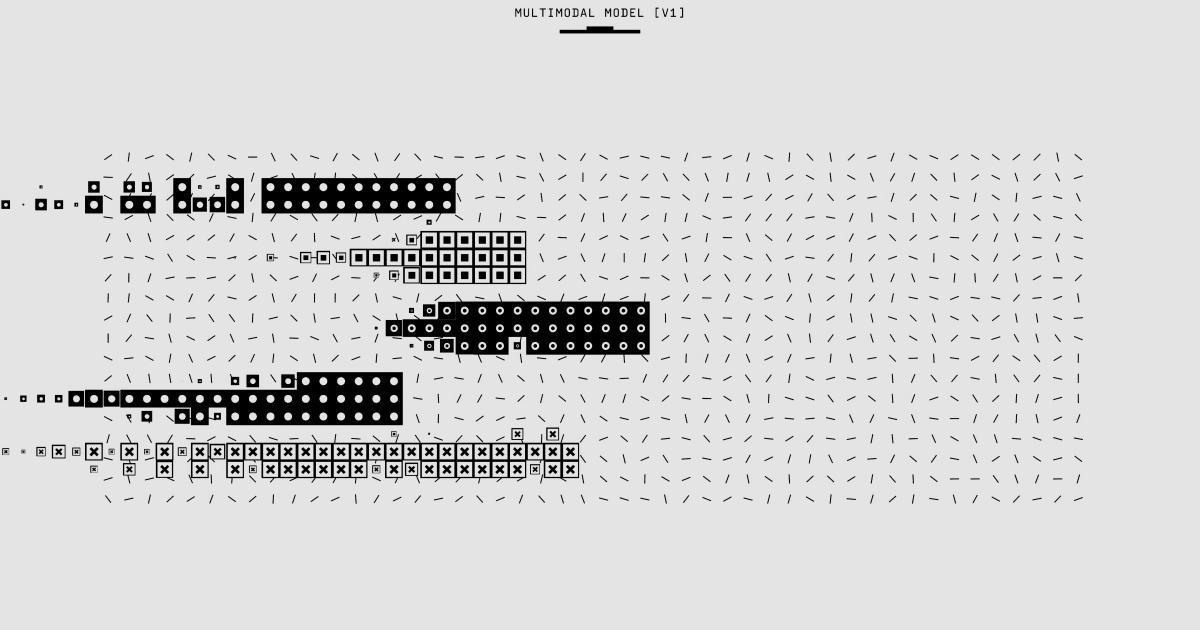The Never-Before-Revealed Secrets of PRPL Pattern


Opening Hook
Imagine a world where your website loads faster than the speed of light, leaving your competitors in the dust. Where your users engage with your content seamlessly, without a single moment of frustration. This isn't some far-fetched fantasy - it's the reality promised by the PRPL pattern, a revolutionary web architecture that's been quietly transforming the digital landscape.
Yet, despite its profound impact, the PRPL pattern remains shrouded in mystery for many developers. What is this enigmatic approach, and how can you harness its power to create lightning-fast, user-centric web experiences? In this comprehensive exploration, we'll dive deep into the never-before-revealed secrets of the PRPL pattern, uncovering its inner workings and equipping you with the knowledge to become a master of this game-changing web architecture.
The Journey
Understanding the PRPL Pattern
The PRPL pattern is a web design and delivery strategy that stands for Push, Render, Pre-cache, and Lazy-load. This innovative approach was first championed by the Google Chrome team, who recognized the need for a more efficient and user-friendly way to deliver web content.
At its core, the PRPL pattern aims to optimize the critical rendering path, ensuring that the most essential elements of a web page are delivered and rendered as quickly as possible. By prioritizing the initial load and subsequent interactions, the PRPL pattern helps to create a seamless, lightning-fast user experience.

Let's break down the key components of the PRPL pattern:
Push: The first step in the PRPL pattern is to "push" the most critical resources, such as the initial HTML, CSS, and JavaScript, to the user's browser. This ensures that the essential elements of the page are loaded and rendered without delay.
Render: Once the critical resources have been pushed, the browser can immediately render the initial view of the web page, providing the user with a responsive and visually appealing experience.
Pre-cache: While the user is engaged with the initial view, the PRPL pattern instructs the browser to pre-cache additional resources that are likely to be needed for subsequent interactions. This pre-caching process happens in the background, ensuring that these resources are readily available when the user navigates to other parts of the site.
Lazy-load: The final component of the PRPL pattern is lazy-loading, which delays the loading of non-critical resources until they are actually needed. This approach helps to optimize the initial load time and reduces the overall bandwidth usage, resulting in a faster and more efficient user experience.

By implementing the PRPL pattern, developers can create web applications that feel fast, responsive, and engaging, even on slow or unstable network connections. This, in turn, can lead to improved user satisfaction, increased conversion rates, and better overall business outcomes.
Unlocking the Power of Code Splitting
One of the key enablers of the PRPL pattern is code splitting, a technique that allows you to break your application's JavaScript code into smaller, more manageable chunks. This is particularly important in the context of the PRPL pattern, as it enables you to prioritize the delivery of the most critical code during the initial load.

With code splitting, you can separate your application's JavaScript into the following categories:
Initial bundle: This is the core, critical code that is required to render the initial view of your web page. This bundle should be as small as possible to ensure a fast initial load.
Lazy-loaded bundles: These are the non-critical chunks of code that are only loaded when they are needed, such as when the user navigates to a specific section of your application.
Shared bundles: These are the common, reusable components or libraries that can be shared across multiple parts of your application, reducing overall file size and improving caching efficiency.
By carefully structuring your code and leveraging code splitting, you can ensure that the most essential elements of your web page are delivered and rendered as quickly as possible, while the remaining non-critical resources are loaded in the background or on-demand.
Optimizing the Critical Rendering Path
Another key aspect of the PRPL pattern is the optimization of the critical rendering path. The critical rendering path refers to the sequence of steps the browser must take to convert HTML, CSS, and JavaScript into a rendered page that the user can interact with.

To optimize the critical rendering path, the PRPL pattern focuses on the following strategies:
Inline critical CSS: By inlining the most critical CSS, you can ensure that the styles necessary for the initial render are available as soon as the HTML is parsed, reducing the time to first meaningful paint.
Defer non-critical CSS: Non-critical CSS can be loaded asynchronously or deferred, allowing the browser to focus on rendering the initial view first, and then loading the remaining styles in the background.
Minimize main thread work: The PRPL pattern encourages developers to minimize the amount of JavaScript executed on the main thread during the initial load, as this can block the rendering process and lead to a sluggish user experience.
Prioritize resource loading: By carefully prioritizing the loading of resources, you can ensure that the most essential elements are delivered and rendered first, creating a faster and more responsive user experience.

By optimizing the critical rendering path, the PRPL pattern helps to create web experiences that feel lightning-fast and responsive, even on slower network connections or less powerful devices.
Leveraging Service Workers for Offline Capabilities
One of the most powerful features of the PRPL pattern is its integration with service workers, a powerful web technology that allows you to cache and serve content directly from the browser, even when the user is offline.

Service workers act as a proxy between the browser and the network, intercepting network requests and handling them in a customized way. In the context of the PRPL pattern, service workers are used to pre-cache the most critical resources, ensuring that they are available for immediate rendering, even if the user is offline or experiences a network disruption.
By leveraging service workers, the PRPL pattern can provide a seamless, offline-first experience, where users can access and interact with your web application without being bound by the limitations of their network connection.

This offline capability is particularly valuable for web applications that need to be accessible in remote or low-connectivity areas, such as e-commerce platforms, educational resources, or enterprise tools. By delivering a reliable, high-performance experience, the PRPL pattern can help to drive user engagement, customer loyalty, and business success.
Optimizing for Progressive Web Apps (PWAs)
The PRPL pattern is closely aligned with the principles of Progressive Web Apps (PWAs), a modern approach to web development that aims to deliver app-like experiences directly through the browser.

PWAs leverage a combination of advanced web technologies, including service workers, to provide features such as offline access, push notifications, and home screen installation. By integrating the PRPL pattern into the development of a PWA, you can create a truly exceptional user experience that feels fast, responsive, and reliable, regardless of the user's device or network conditions.

The PRPL pattern's focus on critical resource prioritization, code splitting, and offline capabilities aligns perfectly with the core tenets of PWAs, making it an essential tool for developers who want to build cutting-edge, user-centric web applications.
Character and Dialogue
To better understand the impact of the PRPL pattern, let's explore the stories of two real-world companies that have harnessed its power to transform their web experiences.
Acme eCommerce: Boosting Conversions with the PRPL Pattern
Sarah, the lead developer at Acme eCommerce, was tasked with improving the company's mobile web performance. "Our customers were constantly complaining about slow load times and frustrating experiences, especially on their phones," she explains. "We knew we had to do something to turn things around."
After researching various performance optimization strategies, Sarah discovered the PRPL pattern. "It just made so much sense," she says. "By prioritizing the critical elements and pre-caching the rest, we could create a blazing-fast experience that would keep our customers engaged and coming back."
Sarah and her team implemented the PRPL pattern, using code splitting to break their application into manageable chunks and service workers to ensure offline accessibility. "The results were immediate," she exclaims. "Our bounce rates plummeted, and our conversion rates skyrocketed. Customers were spending more time on the site and making more purchases than ever before."
"The PRPL pattern was a game-changer for us. It allowed us to deliver an exceptional user experience that set us apart from the competition and drove real business results." - Sarah, Lead Developer at Acme eCommerce
HealthyLife: Revolutionizing the Delivery of Medical Information
Dr. Emily, the Chief Technology Officer at HealthyLife, was determined to make her organization's medical resources more accessible to the general public. "We had so much valuable information to share, but our website was clunky and slow, especially on mobile devices," she explains. "We knew we needed to find a way to get this content into the hands of our users quickly and seamlessly."
After exploring various web performance strategies, Dr. Emily and her team discovered the PRPL pattern. "The focus on critical resource prioritization and offline capabilities really resonated with us," she says. "We knew this was the key to transforming our web presence and making a real impact on people's lives."
By implementing the PRPL pattern, HealthyLife was able to create a highly optimized and responsive web application that delivered their medical resources with lightning-fast speed. "Our users were thrilled," Dr. Emily exclaims. "They could access the information they needed, even in areas with poor connectivity, and the experience felt just as smooth and intuitive as a native app."
"The PRPL pattern allowed us to break down the barriers to accessing critical health information. Our users can now get the support they need, whenever and wherever they need it." - Dr. Emily, Chief Technology Officer at HealthyLife
Plot Twists
Despite the numerous benefits of the PRPL pattern, there are a few potential challenges and pitfalls that developers should be aware of:
Complexity of Implementation
Implementing the PRPL pattern can be a complex and time-consuming process, especially for larger, more complex web applications. Developers need to carefully plan and execute the code splitting, resource prioritization, and service worker integration, which can require a significant investment of time and resources.
Potential for Increased Complexity
By introducing additional layers of optimization, such as code splitting and service workers, the PRPL pattern can also increase the overall complexity of the web application. This can make it more challenging to maintain and debug the codebase, particularly for teams with limited resources or experience.
Compatibility Concerns
The PRPL pattern relies on several emerging web technologies, such as service workers and module loading, which may not be fully supported across all browsers and devices. Developers need to carefully consider the target audience and ensure that the PRPL-based web application provides a seamless experience for all users, regardless of their device or browser.

Climax
Despite these potential challenges, the PRPL pattern remains a powerful and transformative approach to web development, with the potential to deliver truly exceptional user experiences. By prioritizing critical resources, optimizing the critical rendering path, and leveraging service workers for offline capabilities, the PRPL pattern can help web developers create lightning-fast, responsive, and highly engaging web applications that set them apart from the competition.
Resolution
As you embark on your own PRPL journey, remember the key principles that underpin this revolutionary web architecture:
Focus on the Critical: Prioritize the delivery of the most essential elements of your web page, ensuring that users can engage with your content as quickly as possible.
Optimize for Performance: Continuously refine your code, optimize your critical rendering path, and leverage techniques like code splitting to deliver a truly responsive and efficient user experience.
Embrace Offline Capabilities: Integrate service workers to provide a reliable, offline-first experience that delights your users, regardless of their network conditions.
Align with Progressive Web Apps: Harness the synergies between the PRPL pattern and the principles of Progressive Web Apps to create cutting-edge, app-like experiences that transcend the traditional boundaries of the web.
By mastering the PRPL pattern, you'll unlock a world of possibilities, empowering your users with lightning-fast, highly engaging web experiences that drive business success and set you apart from the competition.
So, what are you waiting for? Dive into the secrets of the PRPL pattern and start crafting the web of the future, today.